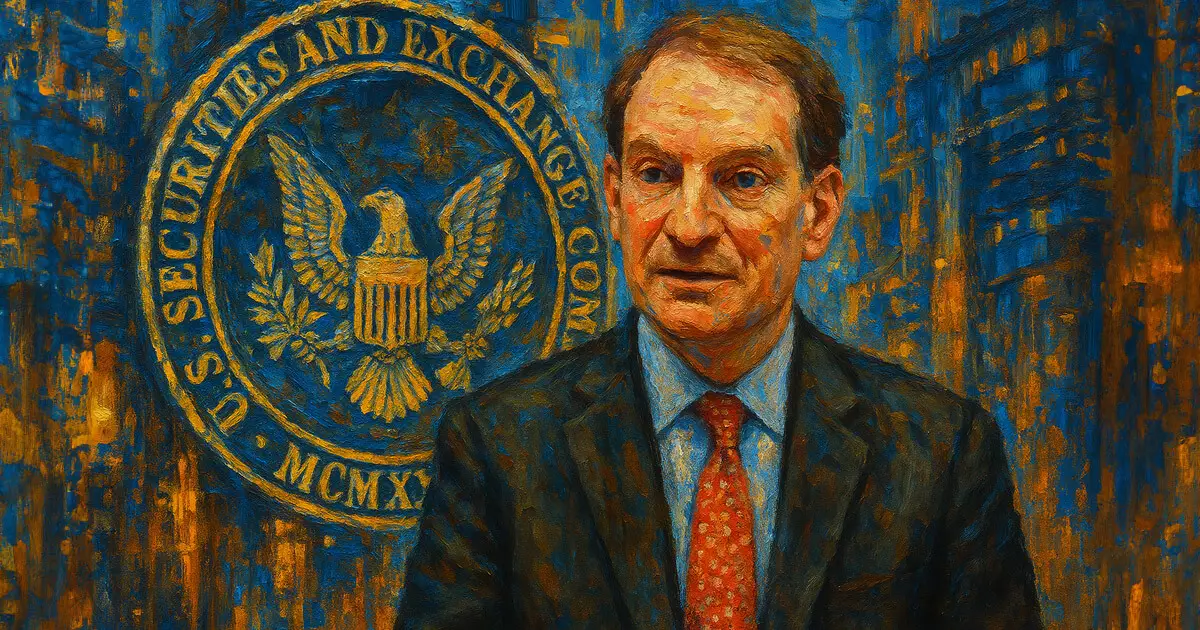In a momentous address that has sent ripples through the financial and technology sectors, Securities and Exchange Commission (SEC) Chairman Paul Atkins has unveiled a transformative three-part strategy aimed at modernizing U.S. crypto asset policy. This shift is not just a mere adjustment but rather a clarion call for the evolution of regulation to keep pace with the rapid innovations in the blockchain space. At a recent SEC Crypto Task Force roundtable, Atkins drew an intriguing parallel between the digital evolution of music — the rise of MP3s — and the potential for blockchain technology to revolutionize capital markets.
For far too long, regulatory methods have been mired in confusion and inconsistency, stifling innovation and casting a pall over the burgeoning crypto landscape. Atkins’ assertion that “it is a new day at the SEC” signals a commitment to nurturing a regulatory environment conducive to growth while maintaining investor protections. This vision aligns directly with the core tenets of center-right wing liberalism, advocating for responsible governance that fosters market dynamism without sacrificing accountability.
Reforming the Landscape for Compliance
At the heart of Atkins’ reform agenda lies an unequivocal acknowledgment of the current barriers hindering the growth of crypto markets. Namely, the outdated disclosure forms and legal ambiguities have made it exceedingly challenging for many digital asset offerings to successfully navigate traditional SEC pathways. By exploring exemptions and creating clearer disclosure guidelines tailored specifically to digital assets, the SEC opens the doors for wider compliance and greater participation in these markets.
The imperative for reform goes beyond bureaucratic minor tweaks; it is about reimagining what it means to issue and trade digital assets. A thoughtful and structured pathway for compliant crypto asset issuance could very well stimulate a wave of new projects that contribute to a robust financial ecosystem. This is not mere speculation; it’s about unleashing the potential of innovation while ensuring that investors remain protected.
Defining Custody in a Digital Age
Custody is another complex area that requires particularly forward-thinking adjustments. Atkins has rightly recommended rolling back the restrictions imposed by Staff Accounting Bulletin No. 121. This old paradigm does not accommodate the complexities of blockchain assets. By advocating for a redefinition of what qualifies as a “qualified custodian,” Atkins acknowledges that the financial landscape is evolving and that regulations must follow suit.
Furthermore, permitting self-custody options reflects an understanding of the practical realities faced by crypto investors today. As the industry matures, it would be prudent for regulators to embrace emerging custody solutions that not only accommodate but encourage security and innovation in asset management. The establishment of modern custody procedures is essential if the U.S. aims to be a global leader in the digital asset space.
Innovation Needs Breathing Room
Atkins’ vision doesn’t merely rest on compliance; it actively seeks to integrate innovation within the existing frameworks. By allowing broker-dealers to provide unified platforms encompassing both crypto and traditional assets, the SEC stands to bolster the natural convergence of these markets. This integrated approach not only simplifies the trading process for consumers but also positions the U.S. as an attractive locale for novel financial products.
Should the SEC take a proactive role and consider conditional exemptions for innovative products yet to fit neatly within current regulations, it would showcase a commitment to fostering an environment rich in ingenuity. In an era where financial truth-telling intersects with burgeoning technologies, the SEC’s adaptability will determine the vitality of U.S. markets in the global arena.
The Warning of Offshore Migration
As Atkins invoked President Trump’s vision for America to become the “crypto capital of the planet,” he poignantly cautioned that failure to modernize could result in a mass exodus of innovation to more favorable jurisdictions. The risk of losing the competitive edge in transnational crypto markets serves as a sobering reminder of the consequences of inaction. Complex global financial systems require that the U.S. embrace coherent and proactive regulation that encourages domestic growth while quelling the allure of more accommodating environments abroad.
The future is bright if the SEC can match its ambition with action. As it embarks on this journey toward comprehensive rulemaking, the focus must remain on the delicate balance between enhancing investor protection and enabling the kind of innovation that has already begun to redefine the financial landscape. Stakeholders across industries await the outcomes of these deliberations with hope, optimism, and a determined expectation for substantive change.



















Leave a Reply